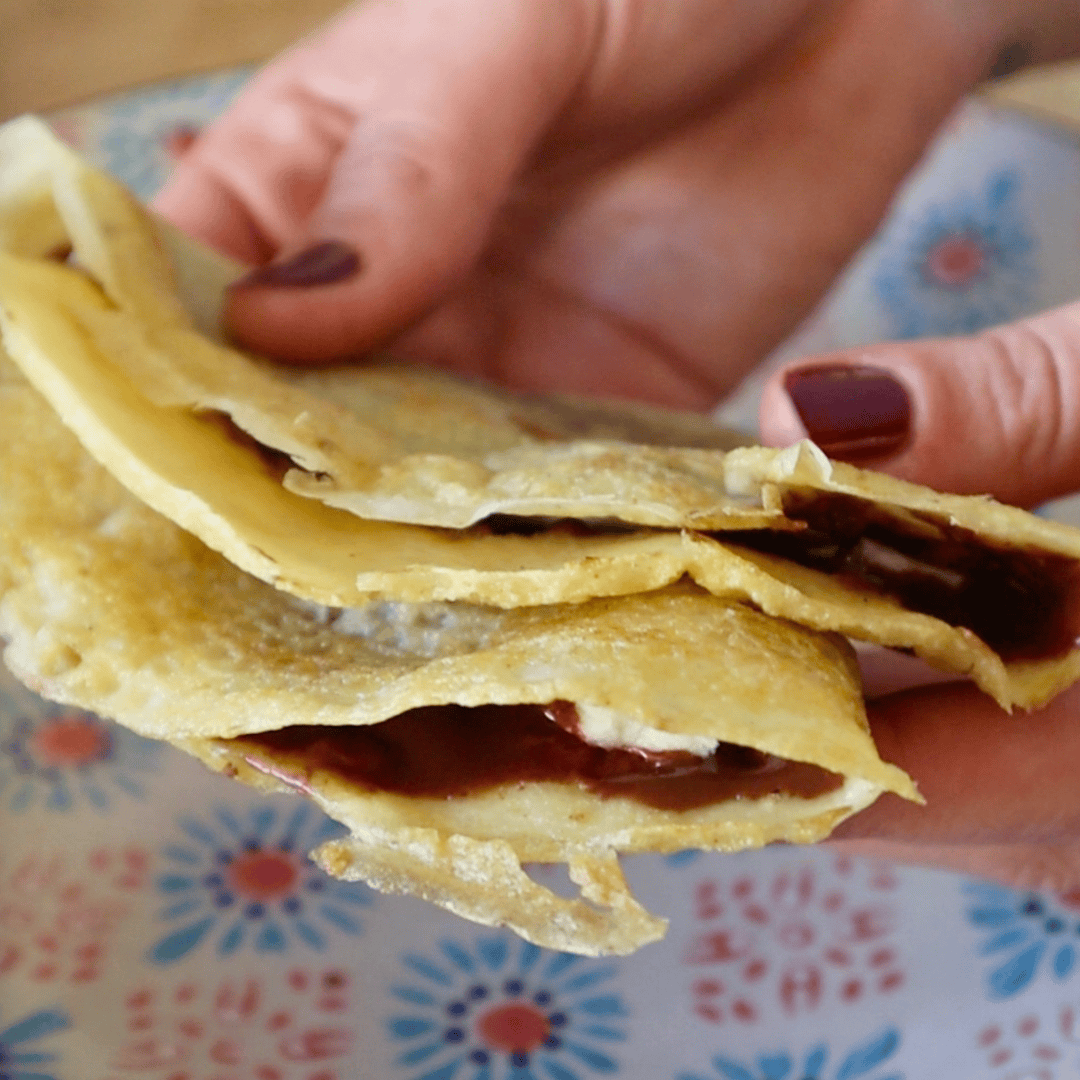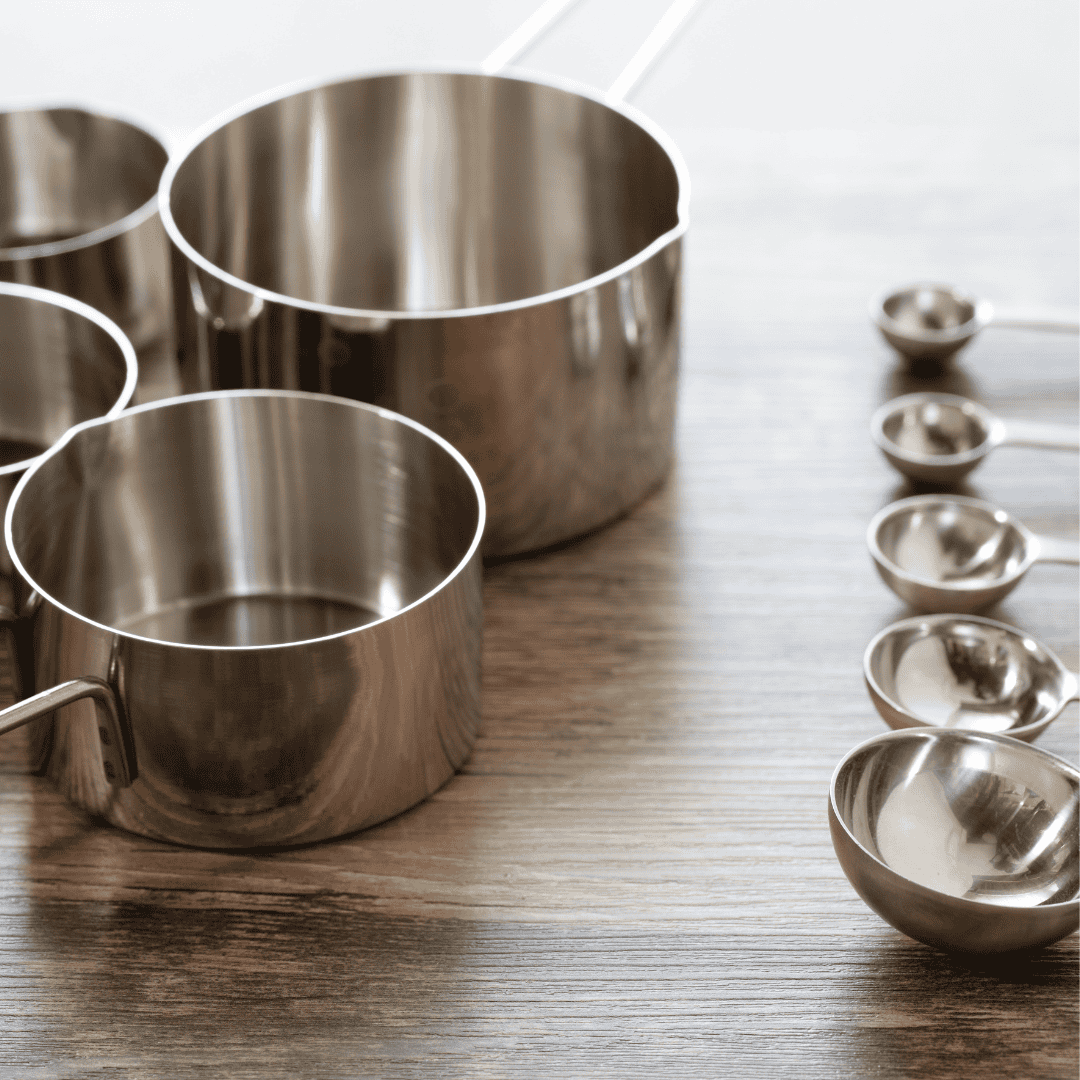Seitan is extracted from the protein in flour. It is commonly referred to as “wheat meat” and it has been around for centuries. It originated in ancient Asia, in China and Japan, where it has been used on its own as well as a meat substitute.
Nowadays it has been transformed into a popular vegan and vegetarian meat option. There are many versions of seitan, this is the most simple form as it’s made with only flour, salt and water.


This recipe follows the traditional and artisanal method of making seitan, also called “washed flour” method. Unlike other recipes where vital wheat gluten is combined with water to make seitan, here flour and water are combined to make a dough and then the dough is washed to remove the starch and be left with the gluten or protein.
What do you need to make seitan from scratch
For the dough:
- Strong bread flour: It is extremely important to choose the right type of flour, it needs to have the highest content of protein. On the package you can find the strength of the flour (W), which should be between 300 and 400 (300 < W < 400). If you can’t see the strength, look at the protein content in the nutritional chart, which should be 13g or more for 100g
- Water: any water will work, I use tap water.
- Salt
Cooking broth:
- Water
- Soy sauce
- Paprika
- Dry herbs of choice
- Onion
- Garlic powder
- Black pepper
How To Make Seitan From Scratch

Making the Dough:
Combine Ingredients: In a large bowl, mix the flour with salt. Gradually add water, the amount needed can vary depending on the flour, the flour and water ratio should be about 2:1. Add water slowly and mix it into the flour with your hands until it forms a dough.
Knead the Dough: Transfer the dough to a lightly floured surface. Knead for 5-8 minutes until it becomes elastic and non-sticky. Return the dough to the bowl, cover it with water until fully submerged, and let it sit for 30 minutes.





Washing the Dough:
- Prepare for Washing: After 30 minutes, drain the water from the bowl. You can divide the dough into 2 or 3 smaller pieces or keep it whole. Place the dough in a colander over a bowl, ideally in the sink.
- Wash the Dough: Open the tap and start washing the dough by kneading and squeezing it to remove the starch. You’ll notice the water becoming more opaque and thicker and it will fill the bowl. Stop the tap once it’s full and continue washing the dough in the water. Once it’s completely white, replace it with clear water and repeat the process. I find one or two washes are more than enough. Do not pour the starchy water down the sink as it may clog it. Instead, you can save the water, let it sit for 24 hours to separate the starch, and use it for washing dishes or watering plants. If you need to discard it, pour it into the toilet. Repeat for the rest of the doughs.
- Finish Washing: Continue rinsing until there’s minimal white starch coming out. When I do it one/two washes are enough. The seitan should feel stretchy, rubbery, and significantly reduced in size. If it seems to fall apart don’t worry because now it has to rest for 10-15 minutes in an empty colander to stabilize.
Cooking Method
There are two main ways in which you can cook homemade seitan. You can either cook it in a flavourful broth or steam it. Boiling it in the broth gives it a more dense texture while steaming it makes it more airy.






If Boiling In Broth, Prepare it:
While the seitan rests, prepare the broth. In a pot, combine water, soy sauce, onion, garlic, bay leaf and seasonings. Bring to a simmer over low heat.
Shaping the Seitan
After resting, the seitan will be more manageable. To make chicken strips, stretch the dough into a rectangle, cut into three strips, braid them, then stretch the braid and tie it into knots. If you’re gonna want to cut it into slices, simply stretch the dough and tie into knots without braiding. I find braids are not necessary for this.






Boil the Seitan
Once shaped, drop the seitan into the broth and cover it with a lid. Cook on low heat (it should not boil) for 30 minutes. Remove the seitan from the broth. You can either cook with it immediately or store it. To store, place the seitan in a container and cover it with the broth. If cooking with it, it’s best to wait at least 20/30 minutes for the seitan to stabilize. You can slice it or tear it apart with your hands to create “chicken “strips.









Other Cooking Method: Steaming
If steaming, place the seitan in a steam and steam for 30 minutes. Then it’s ready to use.



Seitan Recipes – How To Use It
Once it’s been boiled or steamed, you can now cut it into slices, chunks or tear it into strips for a chicken link texture. Here’s a couple recipes I like:
Seitan Escalope or “Scaloppine”
Ingredients
- Flour
- Olive oil
- Garlic
- Rosemary
- Cooking broth
- Lemon juice
- Seitan
Cut the seitan into small slices. Coat in plain flour. Heat up olive oil a pan, add fresh rosemary and whole garlic and cook for 1 minute on low heat.
Add the seitan slices and let them brown on both sides. Now add the cooking broth and let it simmer until reduced. Finish with lemon juice and pepper.





Curried Seitan Strips
- Seitan
- Curry paste
- Olive oil
- Water
Shred the seitan into strips by ripping it with your hands. Heat up olive oil in a pan, add the seitan strips and let them cook until golden brown and crispy on all sides, add the curry paste and some water and let it cook for a few more minutes.
How To Store
Keep the seitan in an air tight container with the cooking liquid in the fridge for up to 1 week or freeze it on its own for up to 6 months.
DID YOU MAKE THIS RECIPE?
I love to see recreations and share them!
How To Make Seitan From Scratch – Flour And Water Method
Ingredients
- 1.220 kg strong bread flour 300 < W < 400 or 13g + protein per 100g
- 610 g water
- 1/2 tbsp salt
Cooking Broth
- 8 cups water
- 3 tbsp soy sauce
- 1 tsp paprika
- 1 tsp dried oregano
- 1 tsp dried thyme
- 1 tsp dried rosemary
- 1 onion or 1/2 tsp onion powder
- 2 bay leaf
Instructions
- Make the Dough:
- In a large bowl, mix the flour with salt, then slowly add water. The amount of water may vary slightly, as different flours absorb water differently. The ratio of flour to water should be about 2:1. Add the water gradually, mixing it into the flour with your hands. Once combined, transfer the dough to a lightly floured surface and knead it for 5-8 minutes until it becomes elastic and no longer sticks to your hands. Place the dough back in the bowl, cover it with water until submerged, and let it sit for 30 minutes.
- Wash the Dough:
- After 30 minutes, pour out the water from the bowl. I recommend dividing the dough into 2 or 3 smaller parts. Place these pieces into a colander over a bowl. Ideally, do this in the sink.Open the tap and start washing the dough by kneading and squeezing it to remove the starch. You'll notice the water becoming more opaque and thicker and it will fill the bowl. Stop the tap once it's full and continue washing the dough in the water. Once it's completely white, replace it with clear water and repeat the process. I find one or two washes are more than enough. Do not pour the starchy water down the sink as it may clog it. Instead, you can save the water, let it sit for 24 hours to separate the starch, and use it for washing dishes or watering plants. If you need to discard it, pour it into the toilet. Repeat for the rest of the doughs.
- It might need another rinse, judge based on the texture you get, then the seitan will be ready. You’ll know it's ready when there’s hardly any white starch coming out, and it feels stretchy and rubbery between your fingers, having reduced significantly in size. Don’t worry if the seitan looks like it's falling apart; it needs to rest for 10-15 minutes to change texture.
- Let the seitan rest for 10-15 minutes in an empty colander.
Cooking Method
- There are two main ways in which you can cook homemade seitan. You can either cook it in a flavourful broth or steam it. Boiling it in the broth gives it a more dense texture while steaming it makes it more airy.
Broth Cooking Method
- While the seitan is resting, prepare the broth. In a pot, add water, soy sauce, onion, garlic, and the seasonings. Place it on low heat and bring it to a simmer.
Shape the Seitan
- After resting, the seitan will be more stretchy and manageable, and it should not break apart. Shape the seitan based on how you plan to use it. For chicken strips, stretch the dough into a rectangle, cut it into three strips, and braid them. Stretch the braid lengthwise and tie it into knots. For slices, simply stretch the dough and tie it into knots without braiding.
Cook the Seitan (Broth Method)
- Once shaped, drop the seitan into the broth and cover it with a lid. Cook on low heat (it should not boil) for 30 minutes. Remove the seitan from the broth. You can either cook with it immediately or store it. To store, place the seitan in a container and cover it with the broth. If cooking with it, it’s best to wait at least 20/30 minutes for the seitan to stabilize. You can slice it or tear it apart with your hands to create chicken strips.
Steaming Method
- If steaming, place the seitan in a steam and steam for 30 minutes. Then it's ready to use. Cut it into chunks or strips.











I’ve just made this, everything works exactly as you say, but I must have done something wrong, because I was left with enough seitan for a meal for one! There’s no way I would have had any to store, it seems very little for so much flour, where did I go wrong?
I don’t think you did anything wrong, every flour is different. Even for similar strong bread flours the results can vary. Did you use flour with a high protein content? It might be useful to try different brands and see how that goes.